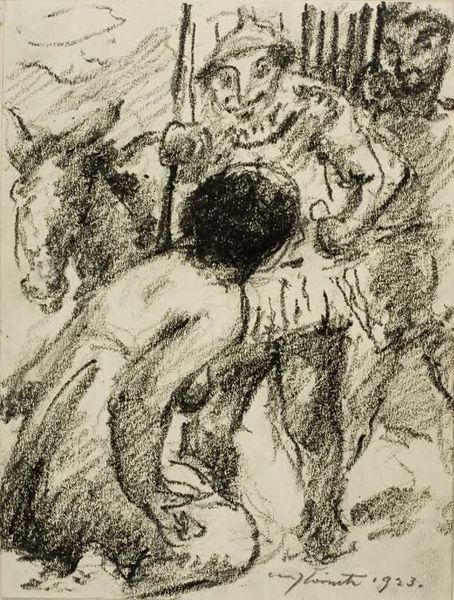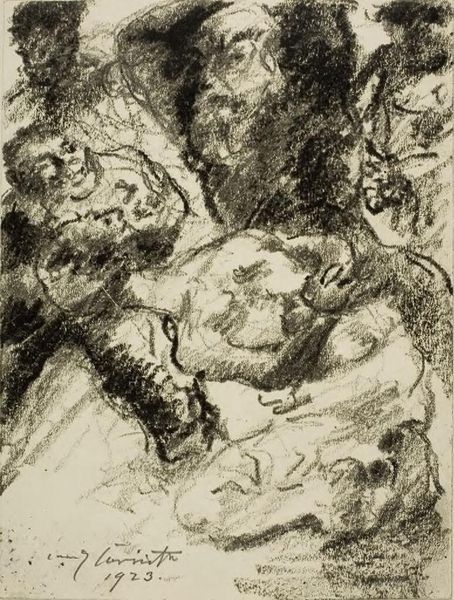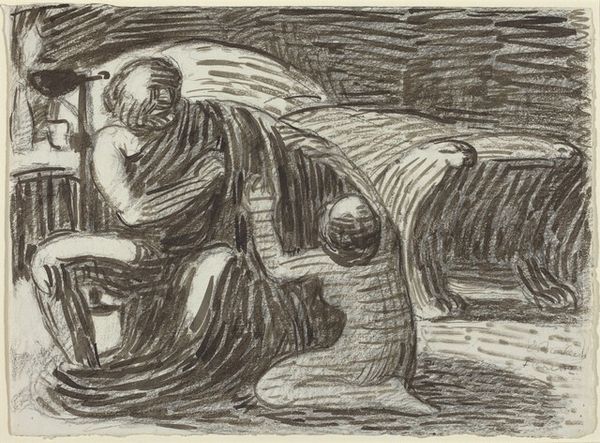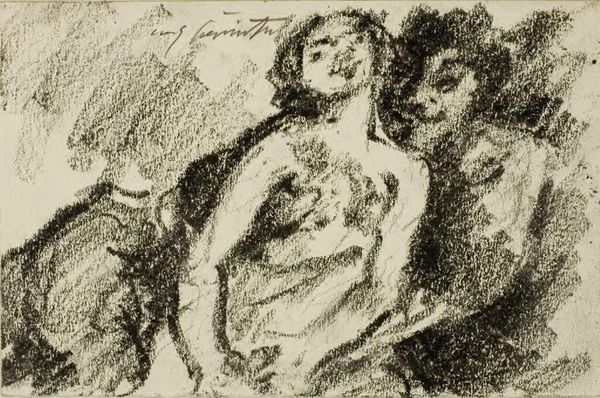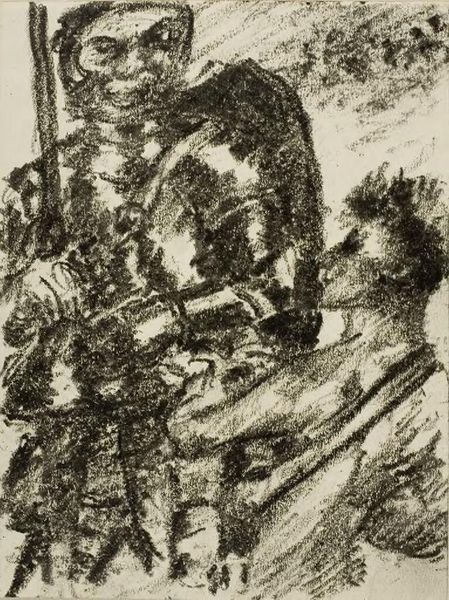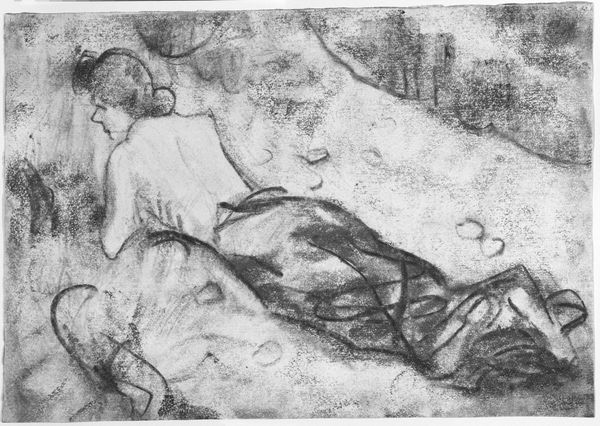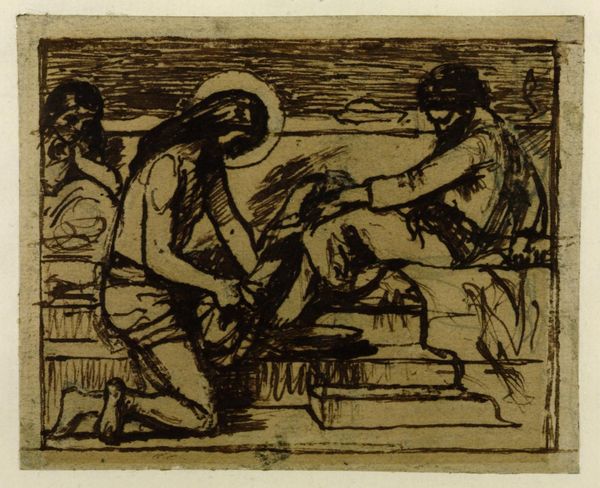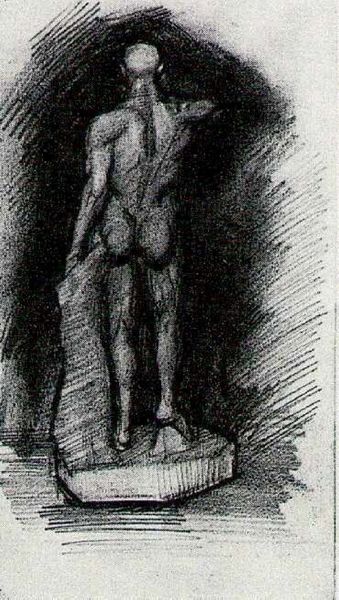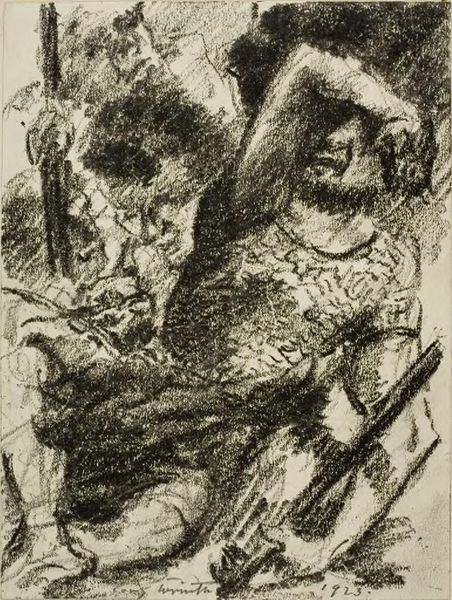
drawing, pencil, pen
#
portrait
#
drawing
#
impressionism
#
landscape
#
figuration
#
pencil
#
pen
#
genre-painting
#
post-impressionism
Copyright: Public domain
Curator: This is Van Gogh's drawing, "Two Women Working in the Field," created in 1890. It’s a pen and pencil work, currently residing at the Van Gogh Museum. Editor: It feels raw, doesn't it? Immediately I’m struck by the visible effort, the almost frantic lines conveying a sense of urgency and the heaviness of their labor. Curator: Precisely! Considering the era, these women likely represent the vast, often unseen, female agricultural workforce. Van Gogh often focused on laborers. How do you read this concerning class and gender dynamics? Editor: It speaks to the unrelenting physicality of their lives, doesn't it? The visible toil. The hats, meant for sun protection, become symbols of anonymity and social position, concealing and categorizing them simultaneously. We see their posture which signals labor that impacts every level of being. Curator: Yes, the way Van Gogh captures the stooped posture of one figure, in particular, evokes the weight of generational labor. It also reflects on Van Gogh’s complex relationship with rural communities— a sort of idealization mixed with an awareness of the hardship. This wasn't some pastoral fantasy. Editor: I’m thinking about the materials, too. The directness of pen and pencil emphasizes immediacy. There's no gloss, no pretense— just the labor of translating labor onto paper. Van Gogh’s materials and means are highlighting and emphasizing their work and existence. Curator: Absolutely. It is interesting how he’s using simple materials and strokes to highlight and give value to other simple manual actions, the working class—which in its own time challenged social mores around art and artists, subject, purpose, and presentation. Editor: Thinking about it all, that hurried feel is not just stylistic. It underscores the incessant demands on these women, who didn't have time for portraits but to constantly serve. Curator: It also shows Van Gogh’s commitment to documenting these conditions. In his landscapes and portraits, we see him continuously working to give voices to those marginalized by society. Editor: I’ve never thought about that choice of the raw medium relating to Van Gogh's greater intent of recording work itself, but I appreciate that new perspective now. Curator: Examining it again, you can feel his drive and advocacy for representation, but through this artistic rendering of materials. Editor: Indeed. Thank you, let’s appreciate all of his perspectives in person on our next visit.
Comments
No comments
Be the first to comment and join the conversation on the ultimate creative platform.
